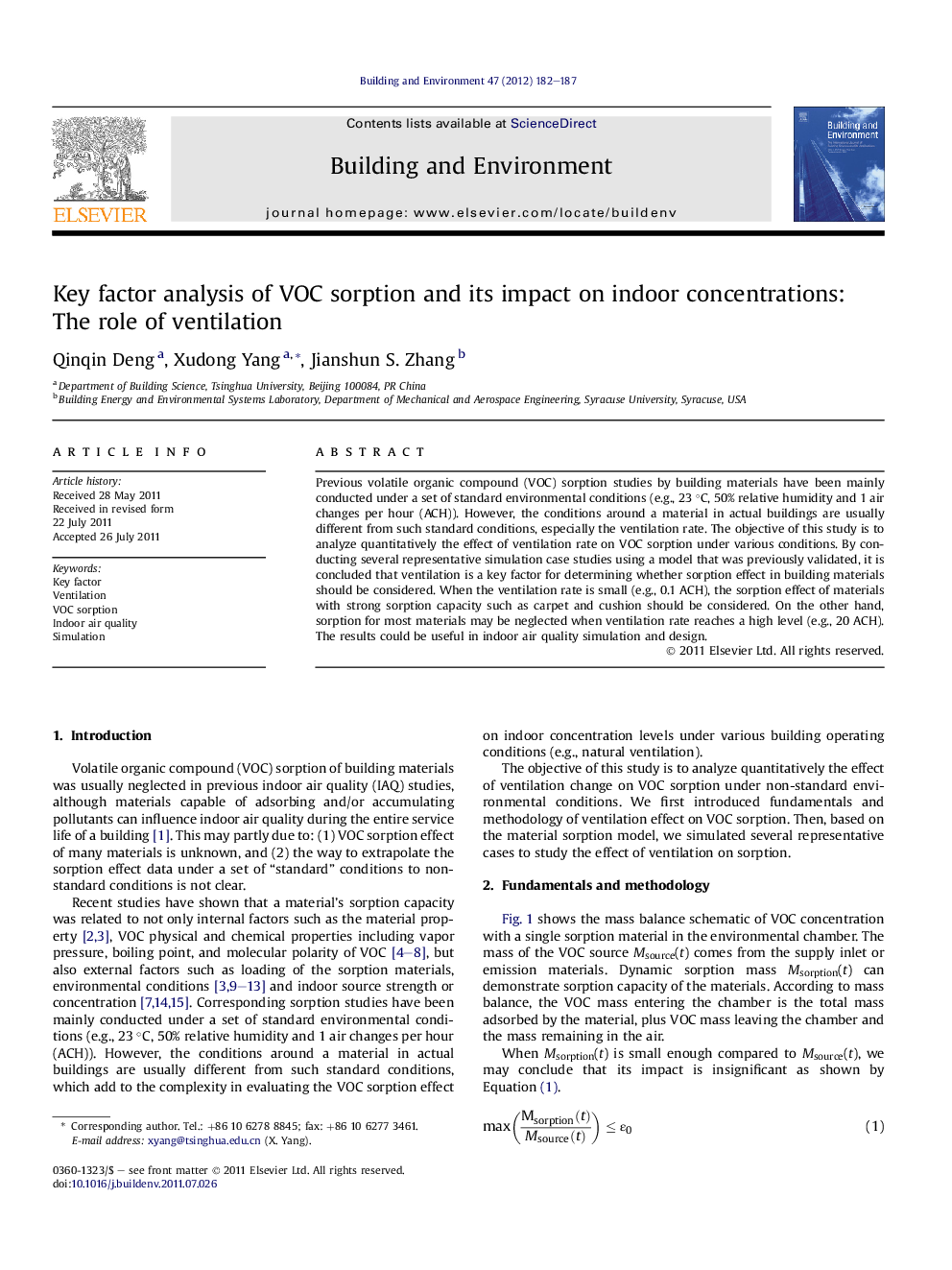| Article ID | Journal | Published Year | Pages | File Type |
|---|---|---|---|---|
| 248600 | Building and Environment | 2012 | 6 Pages |
Previous volatile organic compound (VOC) sorption studies by building materials have been mainly conducted under a set of standard environmental conditions (e.g., 23 °C, 50% relative humidity and 1 air changes per hour (ACH)). However, the conditions around a material in actual buildings are usually different from such standard conditions, especially the ventilation rate. The objective of this study is to analyze quantitatively the effect of ventilation rate on VOC sorption under various conditions. By conducting several representative simulation case studies using a model that was previously validated, it is concluded that ventilation is a key factor for determining whether sorption effect in building materials should be considered. When the ventilation rate is small (e.g., 0.1 ACH), the sorption effect of materials with strong sorption capacity such as carpet and cushion should be considered. On the other hand, sorption for most materials may be neglected when ventilation rate reaches a high level (e.g., 20 ACH). The results could be useful in indoor air quality simulation and design.
► Ventilation is a key factor for volatile organic compound sorption effect. ► Sorption should be considered when ventilation rate is small. ► Sorption may be neglected when ventilation rate reaches a high level. ► The results could be useful in indoor air quality simulation and design.
